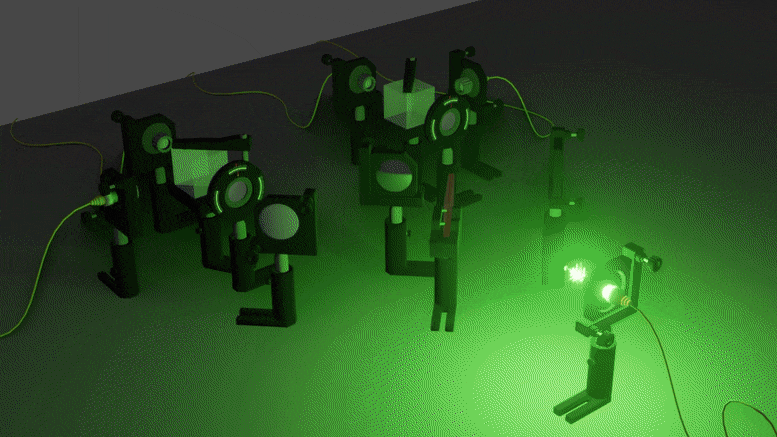There seem to be many good possible locales for a crewed Mars base.
Large swaths of the Martian mid-latitudes show evidence of buried but accessible water ice, a new study reports.

The booster appeared to miss the landing pad of the company’s droneship in the Atlantic Monday night.



Imperial College expert warns new coronavirus wave could kill tens of thousands of Britons by late summer if lockdown is completely lifted too early.
Professor Azra Ghani revealed how a new model made at Imperial College London forecasts a wave of deaths by summer 2021 if restrictions are eased in July — even despite a successful vaccine rollout.


When Light and Atoms Share a Common Vibe
An especially counter-intuitive feature of quantum mechanics is that a single event can exist in a state of superposition — happening both here and there, or both today and tomorrow.
Such superpositions are hard to create, as they are destroyed if any kind of information about the place and time of the event leaks into the surrounding — and even if nobody actually records this information. But when superpositions do occur, they lead to observations that are very different from that of classical physics, questioning down to our very understanding of space and time.

Like.
By Amir Ebrahimi — Principal Software Engineer · Unity Technologies
What opened quantum computing up for me was realizing that it’s even more connected to our physical universe than classical computing is.
I’m at Unity, where I have a day job developing software for Barracuda, our CPU/GPU optimized inference engine for neural networks. I’ve been working in the video game industry since 2003, which is usually on the cutting edge of technology, so it’s surprising that I had never heard about quantum computing until about three years ago — I don’t know if I was ignoring it or if I simply wasn’t exposed to it. Back in 2018, one of my coworkers who was already interested in quantum computing shared a few links to the IBM Quantum Experience, and explained that you could use a quantum computer online. I took a look and bookmarked it, but didn’t actually try it out.
Check out Dementikko’s video!
If you want to mess around with the code:
https://github.com/CheerfulUser/Chetzemoka_path/tree/main